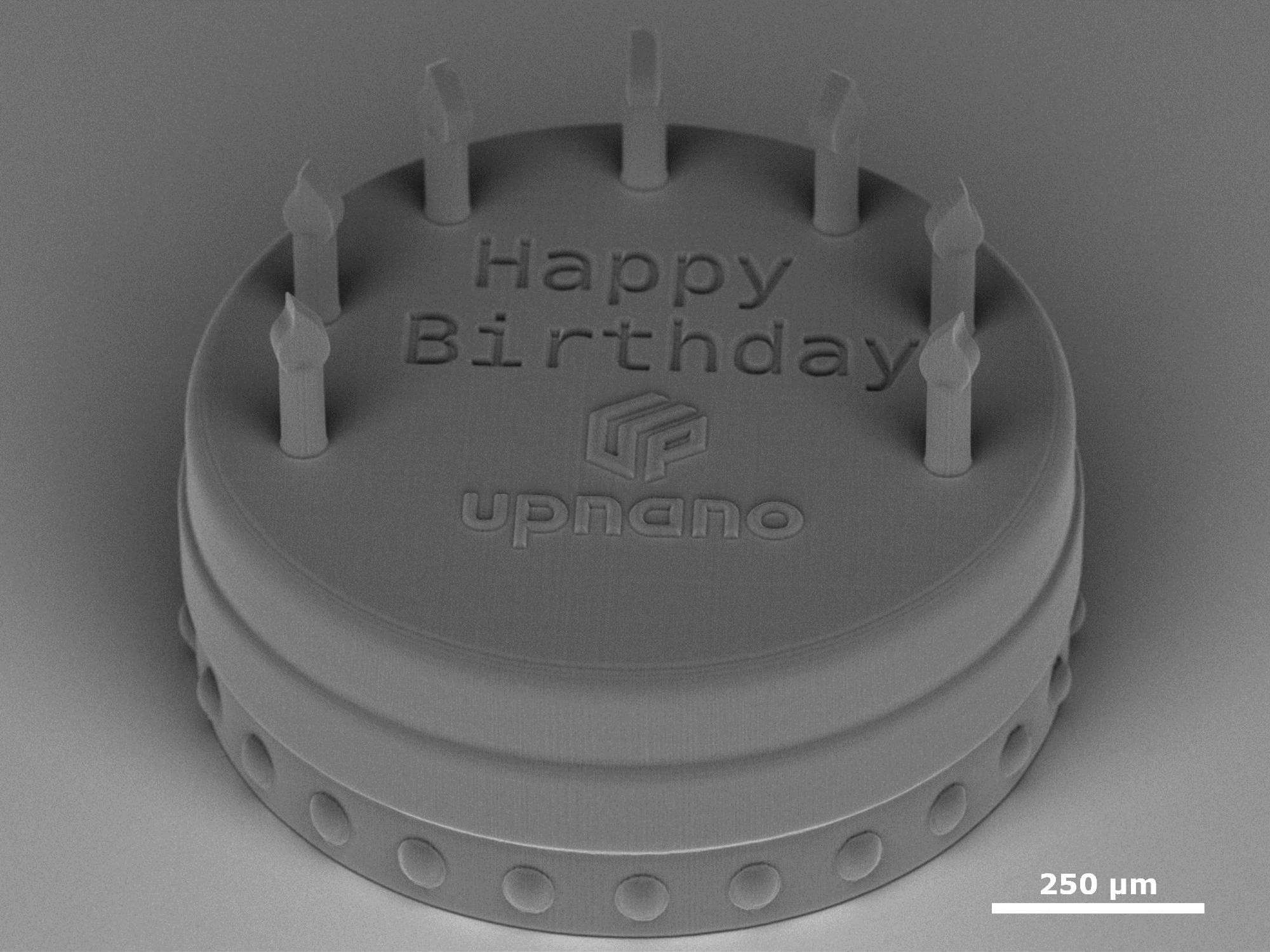UpNano GmbH, headquartered in Vienna, Austria, is celebrating its fifth anniversary alongside its global network of industrial and academic customers who have reaped the benefits of the fastest high-resolution 2PP 3D-printer available. Founded in 2018, the company has embarked on a remarkable trajectory of growth, marking its pivotal role in meeting the escalating demand for rapid and precise 3D printing solutions. With its Vienna headquarters and an affiliated presence at MIT.nano, the NanoOne range of printers has successfully showcased its prowess to enthusiastic audiences in both the United States and Europe. Recent advancements, including the tilt-frame mechanism, advanced bio inks, and a software upgrade enhancing printing speeds, underscore the unceasing innovation potential of this rapidly emerging contender in the global 3D-printer market, unlocking the realm of serial production with 2PP 3D-printers.
 For the 5th birthday of UpNano there were fortunately not only 2PP Printed Cakes – even if they are very impressive. Image Credit: UpNano GmbH
For the 5th birthday of UpNano there were fortunately not only 2PP Printed Cakes – even if they are very impressive. Image Credit: UpNano GmbH
Today commemorates the fifth anniversary of UpNano's ascendancy as an innovation powerhouse in the 2PP 3D-printer domain. Conceived in 2018 by a group of visionary scientists from TU Vienna, UpNano harnessed the potential of combining unparalleled laser power with what would later be hailed as "adaptive resolution" technology. This breakthrough was seamlessly integrated into a compact desktop printing system that occupies considerably less space compared to its counterparts. Since then, the company has continued to astonish the industry with a steady stream of innovations, expanding both the application horizons and performance thresholds of the NanoOne printer lineup.
Exponential Sales Growth
Bernhard Küenburg, CEO of UpNano, reflects on the company's inception, stating, "When UpNano was founded in 2018, the landscape of high-resolution 3D-printers was disappointingly sparse. This scarcity spurred us to overcome the limitations of existing systems. Just a year later, we introduced a significantly more potent laser system coupled with a patented adaptive resolution technology. The result was the NanoOne printer series, capable of high-resolution 3D-printing across an astounding twelve orders of magnitude." In that same year, the first NanoOne printer was delivered to a customer, propelling sales into a trajectory that has consistently doubled each year since 2020.
Central to this success narrative is the compact desktop printing system's versatility, making it equally suited for academia and industry. Therefore, it was unsurprising when MIT.nano formalized a partnership with UpNano in 2022, securing a NanoOne printer for their facilities to showcase the system's capabilities to potential customers in the United States.
Driving UpNano's triumph story is a thriving R&D department headquartered in Vienna. The expansion of the R&D space in 2021 bore fruit, facilitating the introduction of a range of new materials boasting unique attributes. These include UpBlack, a non-transmissive print material crucial for optical systems; UpThermo, a heat-resistant resin tailored for the electrical industry; UpFlow, a highly viscous biocompatible ink; and several other bioinks enabling the incorporation of living cells or complex biocompatible structures with unprecedented intricacy.
Empowering Printer Potential
The evolution of the NanoOne printer line witnessed the introduction of the NanoOne Bio system, dedicated to 3D bioprinting with living cells. A well timed UpNano innovation that anticipated the growing demand for such systems and soon forced competitors to offer copycat solutions. Meanwhile UpNano's offer of the tilt-frame mechanism in 2022 empowered all NanoOne systems to rectify surface irregularities of substrates, further augmenting printing precision. The R&D department's latest breakthrough is a software upgrade that propels the fastest 2PP 3D-printer on the market to new heights. Smart stitching now enhances final product quality, while the already impressive printing speed receives an additional boost. Furthermore, multiple disparate print jobs using the same objective and material can now be merged, optimizing costs and time. These strides align with the objective of providing the precision of 2PP 3D-printing at the speed imperative for future serial production.
As UpNano's team celebrates its fifth anniversary, it's a moment not only to contemplate the remarkable growth achieved since the company's inception but also to recognize the numerous awards bestowed upon the company during this journey. Bernhard Küenburg, elaborates, "These accolades underscored the early recognition of our technology's immense potential. Despite this external validation, we remain privately owned, with founders retaining a majority stake. Our growth is a testament to owner investments and a significantly expanding cash flow - a source of immense pride for us."